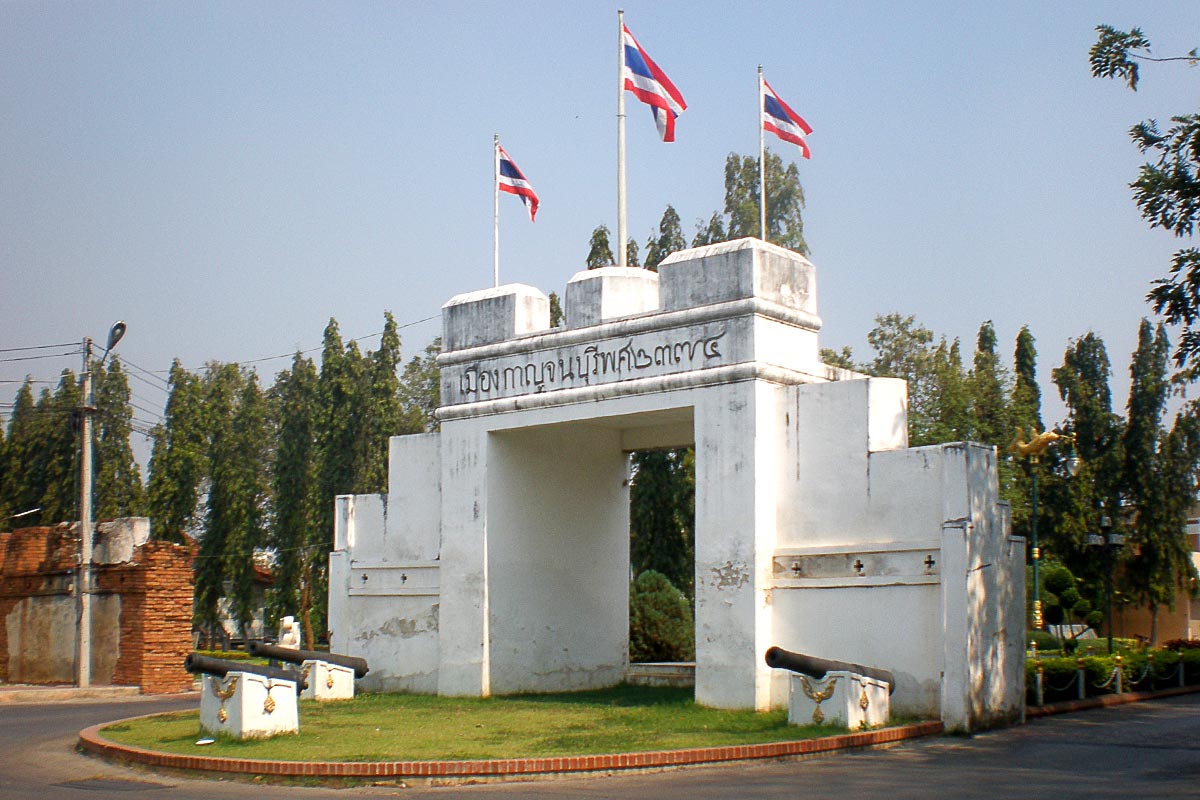
Amanita is the name
The flowers cover everything
The flowers cover over everything
—R.E.M.
The relatively unknown town of Kanchanaburi, west of Bangkok, Thailand, has a violent history and is chock full of reminders of the town’s role in some terrible events of World War II.
Being a small Thai town, it’s also managed to come to grips with its history very nicely and is simultaneously a chilled, pleasant place to spend some time.
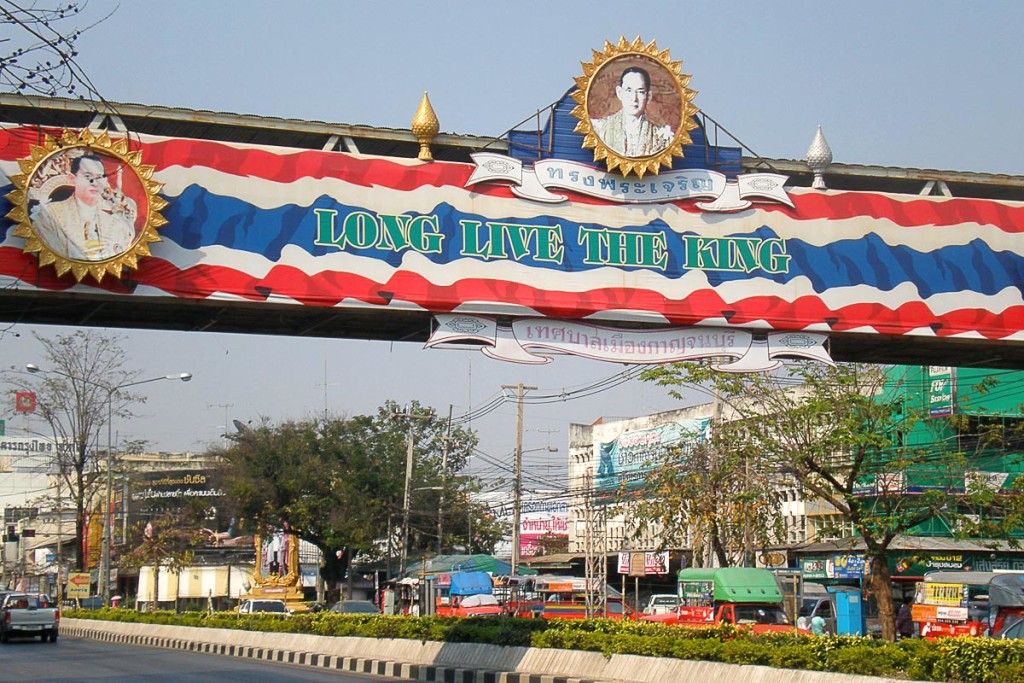
On Day 3 of my own solo trip to Thailand I left Bangkok and headed to Kanchanaburi (กาญจนบุรี) on a slow third-class train. I found a cheap and awesome room in a guesthouse floating on the Khwae Yai River, and stayed for four days, riding a bicycle around town and visiting cemeteries and of course the famous “Bridge on the River Kwai”.
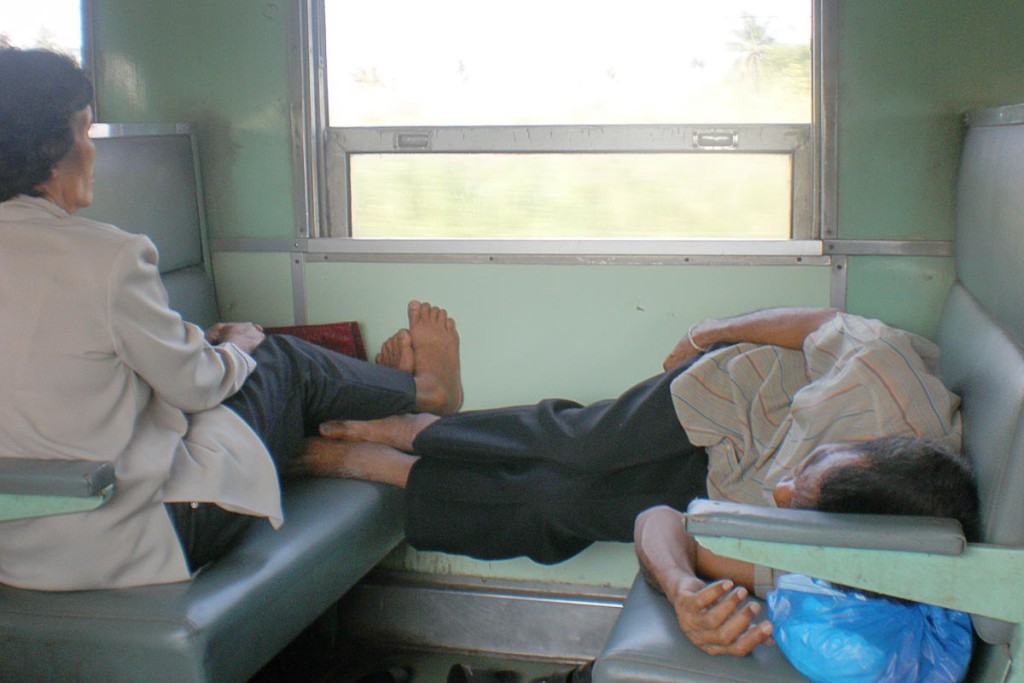
Thai train towards Myanmar
The train to Kanchanaburi left not from Bangkok’s main station, but from tiny and inconvenient Thonburi Station, a short boat ride across the Chao Phraya River. (My Lonely Planet refers to this station as “Bangkok Noi”, but that seemed to be a figment of their imagination for nothing said that in the actual station. It took a while to make sure it was the correct station.)
I love third-class Thai trains. They move slow; people nap and eat strange-looking food sold by hot-looking vendors that walk up and down the cars; trees smack the open windows and get leaves in the train; and there is an unhurried, live and let live feeling to every journey.
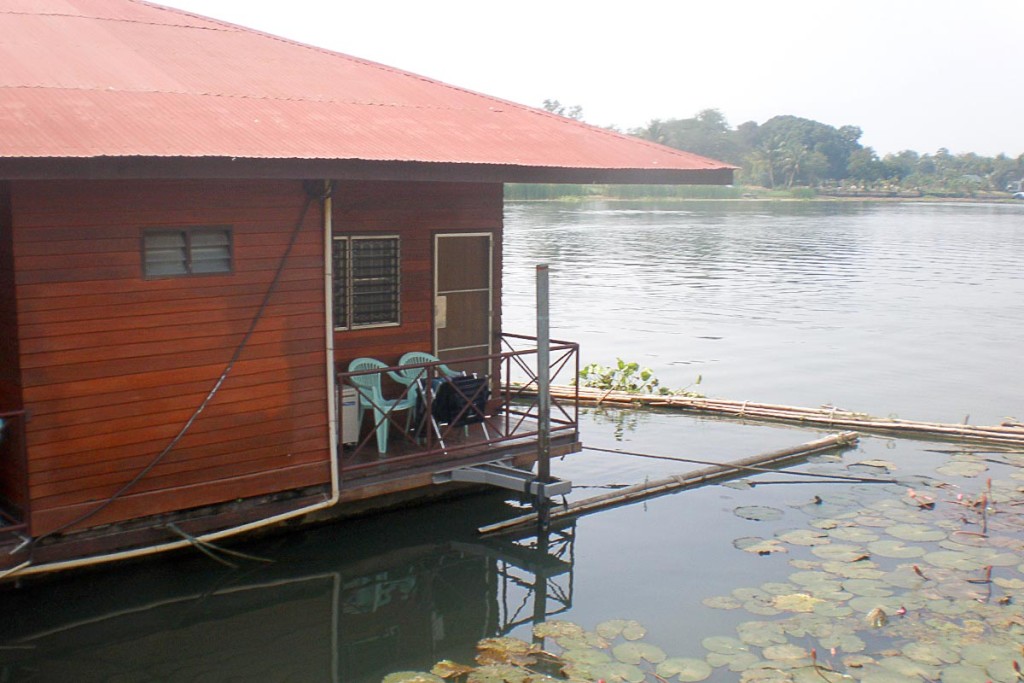
My back porch at VN Guesthouse.
My train stopped at a station called Tharua Noi for an hour, waiting for another train to pass from the other direction. I watched people in a nearby parking lot setting up a little market. The train finally started moving again, and we were an hour late getting to Kanchanaburi.
As it should be.
I found a room at VN Guesthouse on a narrow back alley near the center of Kanchanaburi. For 280 baht (about $9) a night I got a room on a floating platform on the river, with hot water in the shower and nice big bed. They had a restaurant serving basic Thai traveler food where I often ate.
VN Guesthouse was a great base to explore the town. “Karaoke boats” would float by every so often in the evenings, with garish lights strung around them and with travelers warbling melodramatic pop tunes, but they weren’t too distracting.
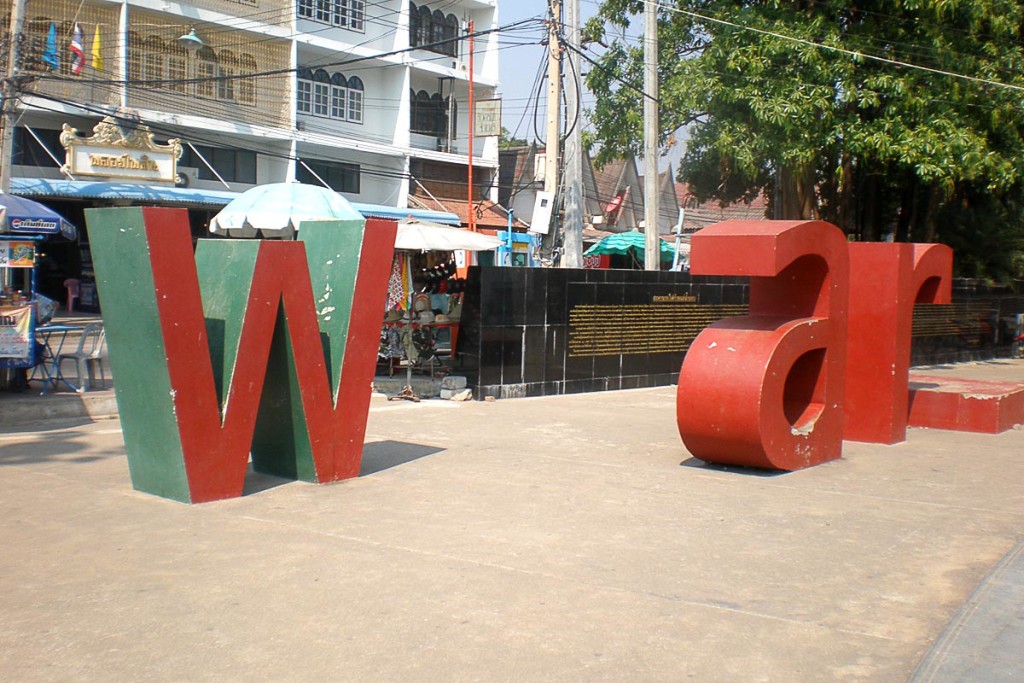
The Bridge on the River Kwai
The 1957 movie Bridge On the River Kwai (transliterating Thai into English yields different spellings, depending on how you do it) is a fictionalized account of the Japanese army forcing POWs to build a bridge in the unforgiving jungle in harsh conditions during World War II. The actual bridge that the movie is based on is a few miles from Kanchanaburi (and the movie was shot in Sri Lanka) but the tourist bridge is right in town.
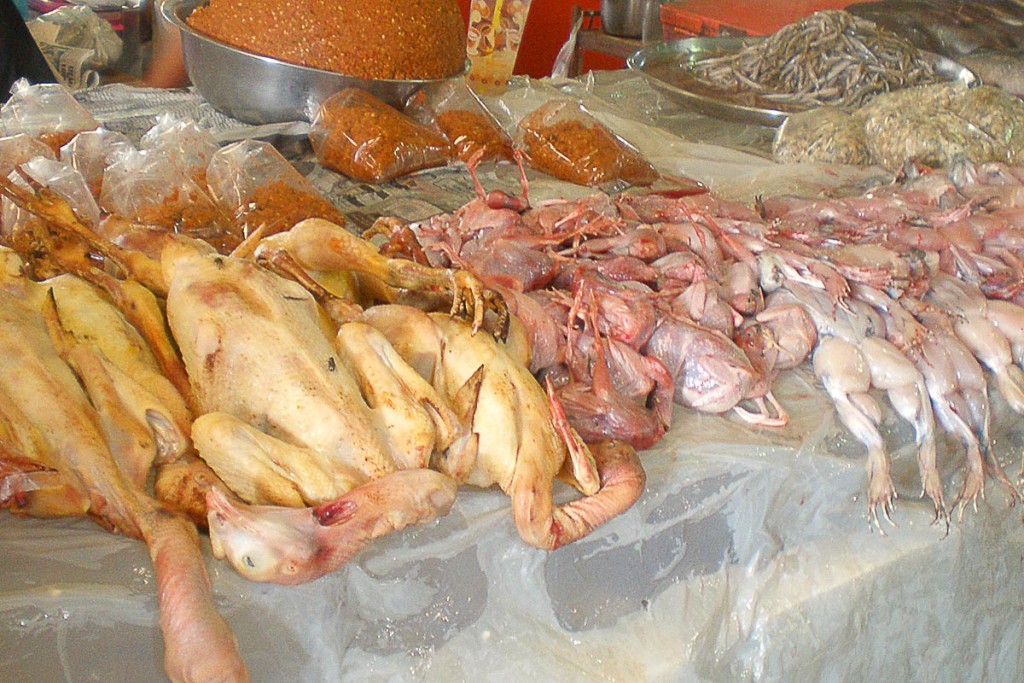
Two rivers meet in the town – the Khwae Yai and the Khwae Noi – and form the larger Mae Klong River (which empties into the Gulf of Thailand) just south of my guesthouse. The modern train line crosses the Khwae Yai in the north part of town, and the bridge on which it does so is now the accepted tourist destination.
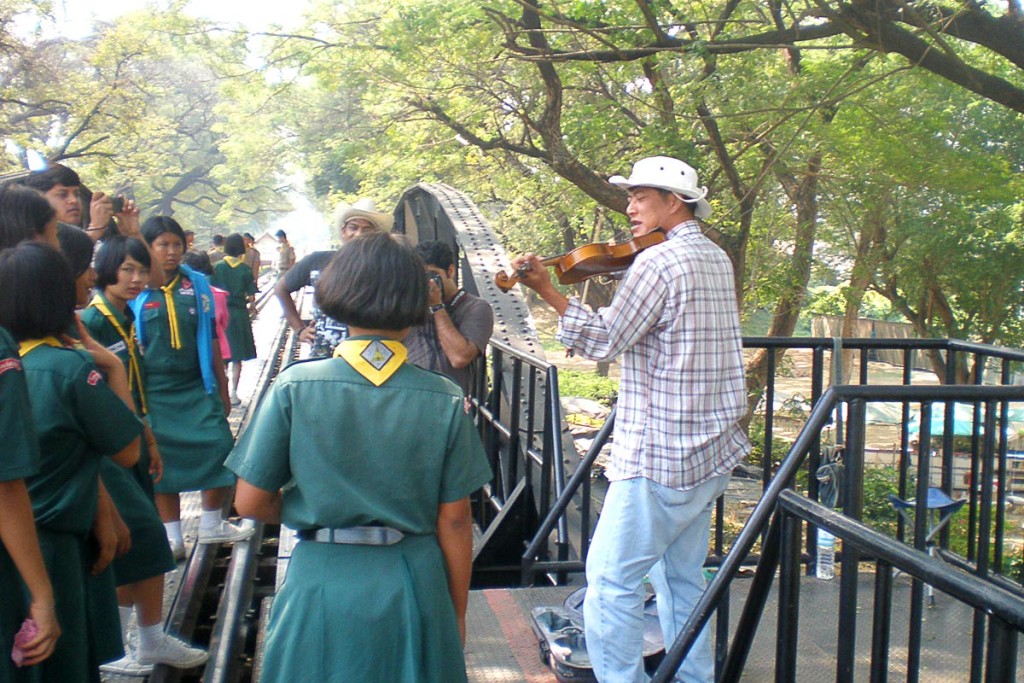
I rode my guesthouse’s bicycle up there on Day 5. It was a very hot day, and I was sweating buckets. And I wasn’t the only person there, either: other tourists, plus a group of Thai schoolkids, were also touring the bridge.
Visitors can walk all over the bridge, but have to scoot out of the way when a train comes. (Cutouts in the bridge allow for this.) On the western bank, a Thai man was playing a violin for some of the schoolkids – part of his repertoire, in fact, was the famous theme song that was whistled in the movie Bridge On the River Kwai.
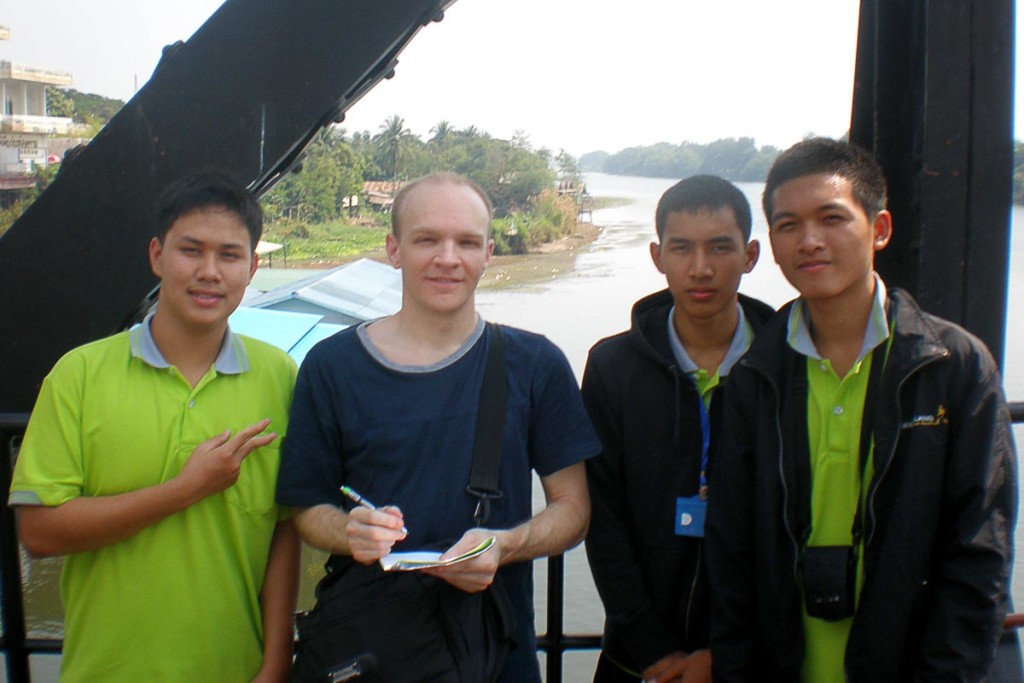
Elsewhere on the bridge, some university students asked, in halting but comfortable English, if they could interview me. They were on the bridge asking foreign visitors about their time in Thailand, where they were from, et cetera. My interlocutors were very friendly and pretended to be very glad that I was so positive about their country.
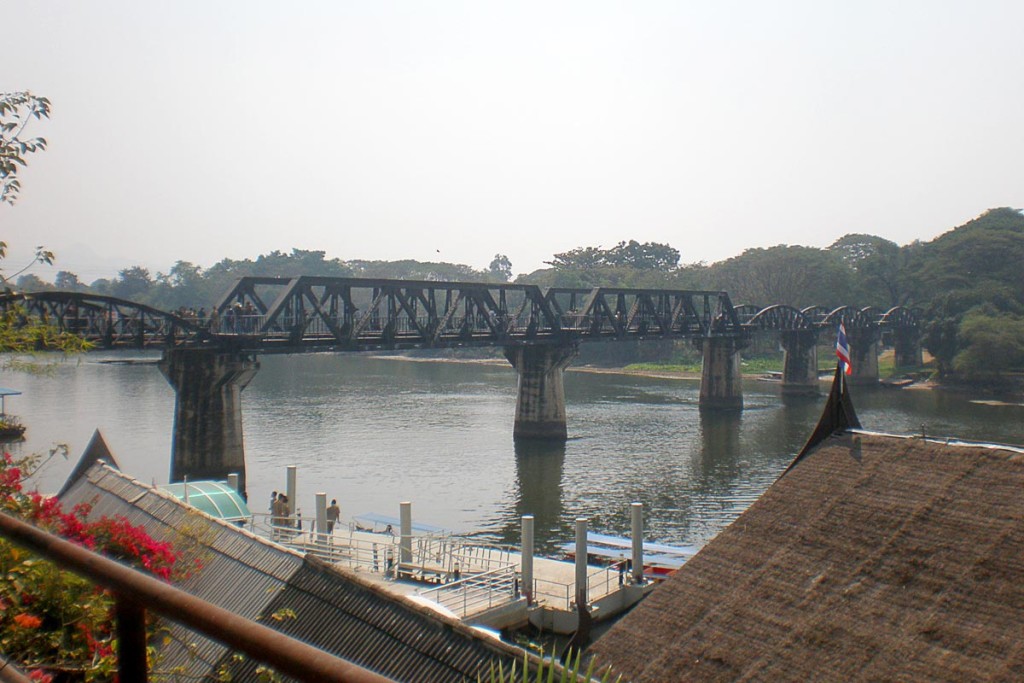
The train bridge which now acts as THE bridge on the so-called River Kwai.
Diabetes report – Getting enough to eat
My meals in Kanchanaburi mostly came from the VN Guesthouse restaurant (rice and chicken meals, cornflake and yogurt breakfasts, etc) and the nearby 7-11. Hot dogs, Gatorade, and small cakes were junky, but were meant to make sure I had enough nutrients.
It only half-worked. I often felt weak in Kanchanaburi. Part of this I know to be psychosomatic, but for some reason I struggle to eat enough. Junk food from 7-11 doesn’t cut it for a meal, and probably is doing me less good than bad. The restaurant meals are good but not enough.
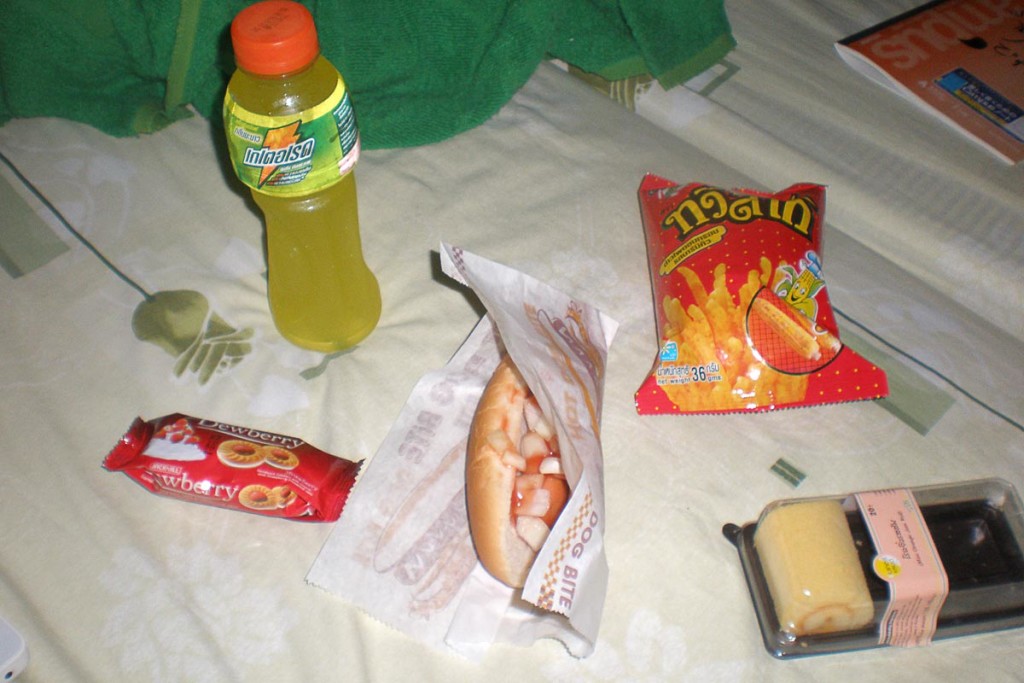
As a result, my blood sugar is higher than it should be too often. Exercise helps, but stress about feeling weak and actual junk food weakness are conspiring to elevate my blood glucose.
It’s something to overcome. Diabetes tries its best to make you smarter and stronger!
Chinese cemetery
In the middle of town is a large, well-kept cemetery with Western POWs buried in it, but next to it is a less well-kept but more visually striking Chinese Cemetery. Large white gravestones and Thai chedis with Chinese inscriptions are jumbled into a large area. Walking among this arresting but quiet collection of monuments to lost lives is quite a trip.
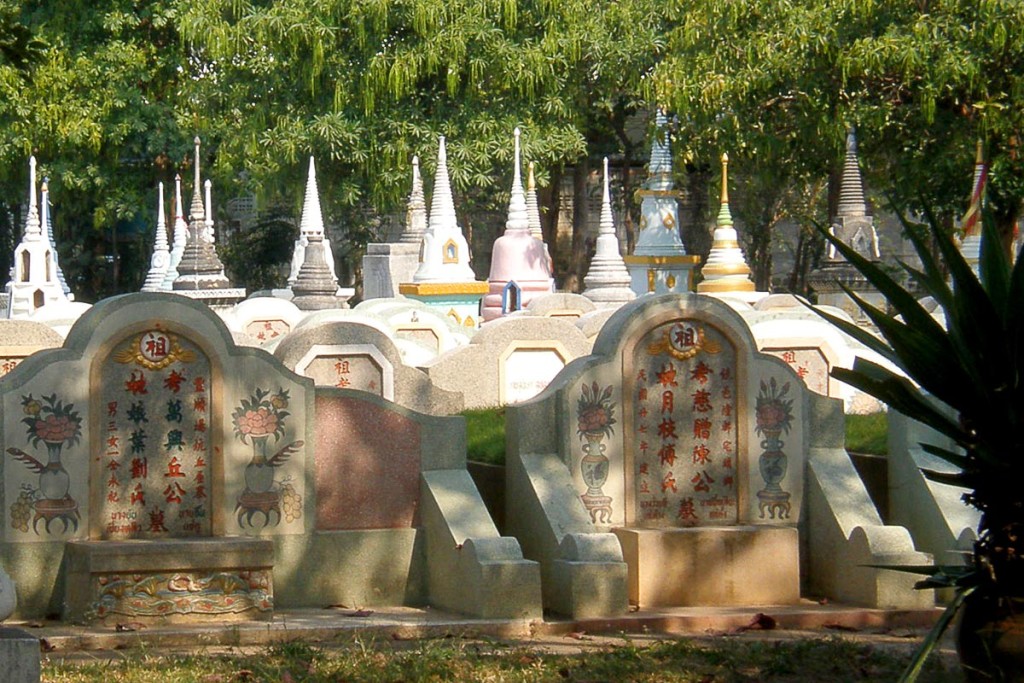
Kanchanaburi: Worth visiting
It’s extremely pleasing to see a new part of a country you thought you knew well. I’ve spent several months of my life in Thailand, overall, but had never been here, west of Bangkok nearer the Burmese border.
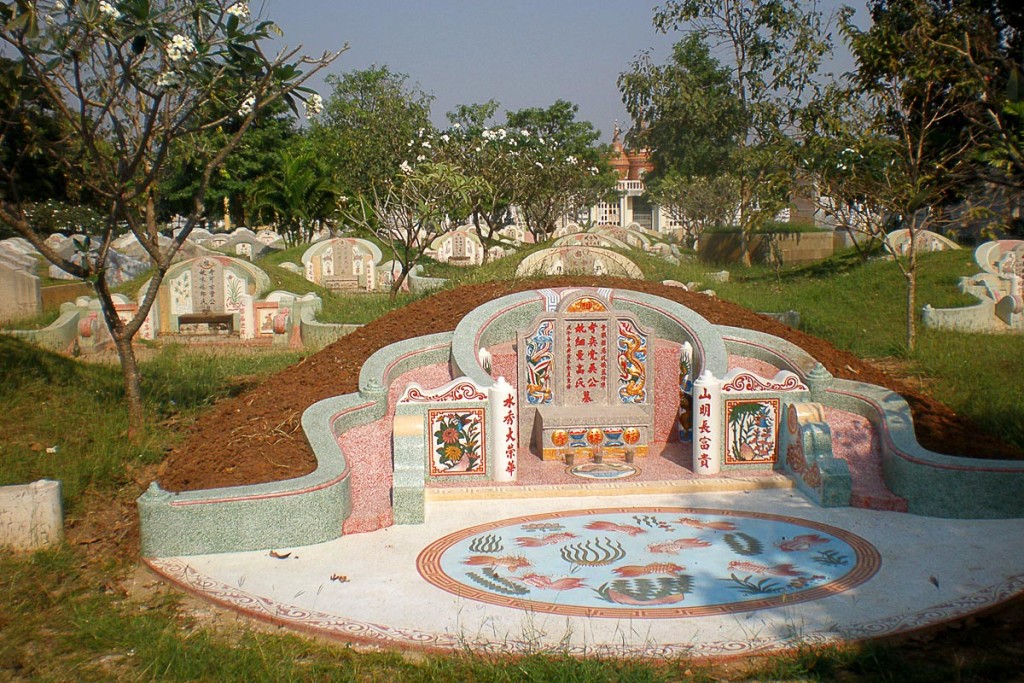
The green scenery, and the easy hospitality of the Thai people, are in abundance here as they are most everywhere in this country. Kanchanaburi has a lot for visitors; its monuments and memorials are stark but charming. Arriving by local train was a nice way to start my time here, too.
Bumming around Thailand is almost endlessly rewarding. It’s highly recommended. Find a month or two and get over there; you can’t go wrong with anywhere in the Land of Smiles!
What interesting historical monuments or unique cemeteries have you visited on your own travels?
Thanks for reading. Suggested:
- Share:
- Read next: Day 7: The Death Railway to Thong Pha Phum
- News: Newsletter (posted for free on Patreon every week)
- Support: Patreon (watch extended, ad-free videos and get other perks)

Support independent travel content
You can support my work via Patreon. Get early links to new videos, shout-outs in my videos, and other perks for as little as $1/month.
Your support helps me make more videos and bring you travels from interesting and lesser-known places. Join us! See details, perks, and support tiers at patreon.com/t1dwanderer. Thanks!
